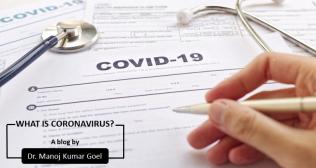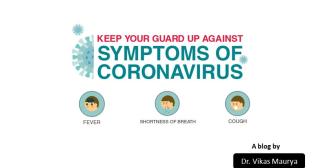
Tuberculosis (TB): Causes, Symptoms, and Diagnosis
A cough that lasts for more than a few weeks can be a source of significant worry. It is easy to dismiss it as a lingering cold or a touch of bronchitis, but when it is accompanied by a persistent feeling of exhaustion and drenching night sweats, it is a clear signal from your body to seek medical attention. These can be the early whispers of Tuberculosis, an ancient infectious disease that, while curable, still requires our serious attention.
Understanding the disease, its causes, and its symptoms is the most powerful tool you have in protecting your health and the well-being of those around you.
The Bacteria Behind The Infection
Tuberculosis (often called TB) is caused by a specific type of bacterium known as Mycobacterium tuberculosis. This organism is primarily spread from person to person through the air. When an individual with active TB disease in their lungs coughs, sneezes, speaks, or sings, they release tiny droplets containing the bacteria into the air. If another person inhales these droplets, they can become infected. It is important to understand that not everyone who is exposed to the bacteria becomes ill.
The infection is not spread by shaking hands, sharing food or drink, or touching bed linens or toilet seats. Prolonged exposure to an infected individual in an enclosed space is typically required for transmission.
Latent TB Versus Active TB Disease
A critical distinction in understanding this condition is the difference between being infected with the bacteria and having the active disease. This concept is central to both diagnosis and treatment. The majority of people who become infected with Mycobacterium tuberculosis do not develop active TB.
The State of Latent TB Infection
In most healthy individuals, the body's immune system is strong enough to contain the bacteria. The immune cells build a wall around the TB bacteria, keeping them in a dormant, or sleeping, state. This is known as latent TB infection. A person with a latent infection has no symptoms, does not feel sick, and cannot spread the bacteria to others. However, the bacteria are still alive in the body and can become active later if the immune system weakens.
The Development of Active TB Disease
Active TB disease occurs when the immune system can no longer keep the bacteria under control. The bacteria begin to multiply and cause tissue damage, leading to the development of symptoms. This can happen shortly after the initial infection, or it can occur many years later. Individuals with weakened immune systems, due to conditions like HIV, malnutrition, diabetes, or advanced age, are at a much higher risk of their latent infection progressing to active disease.
Recognizing The Warning Signs
The signs of active TB disease can be general, or they can be specific to the part of the body that is affected. While Tuberculosis most famously attacks the lungs (pulmonary TB), it can also affect other parts of the body, such as the kidney, spine, and brain (extrapulmonary TB). The following tuberculosis symptoms are important to recognize.
Systemic Symptoms Affecting the Whole Body
When the bacteria become active, the body mounts a significant immune response, which can lead to symptoms that affect your entire system. These general TB symptoms are often the first to appear and can be mistaken for other illnesses, like the flu. They include unexplained weight loss, a persistent feeling of fatigue or weakness, fever, and drenching night sweats. Loss of appetite is also a very common complaint among those with active disease.
Pulmonary Symptoms In The Lungs
When TB disease is active in the lungs, the TB symptoms become more specific and alarming. The most characteristic sign is a bad cough that lasts for three weeks or longer. This is not a simple tickle in the throat; it is a deep, persistent cough. As the disease progresses, a person may begin coughing up blood or sputum, which is a thick, cloudy mucus from deep inside the lungs. Another one of the key tuberculosis symptoms is chest pain, which can occur with breathing or coughing.
The Path to An Accurate Diagnosis
A correct diagnosis is the first and most crucial step toward a cure. Because the tuberculosis symptoms can overlap with many other conditions, a physician will use a combination of tests to determine if the TB bacteria are present and whether the infection is latent or active. The diagnostic process is a methodical investigation to get a clear picture of what is happening inside your body.
Initial Screening Tests
The first step is usually a screening test to see if you have been exposed to the bacteria. There are two common types of tests for this purpose. The Mantoux tuberculin skin test (TST) involves injecting a small amount of a substance called tuberculin into the skin of your forearm. You must return to the clinic within 48 to 72 hours to have a healthcare professional check for a reaction.
A blood test, known as an interferon-gamma release assay (IGRA), is another option that measures your immune system's reaction to the bacteria. It is vital to know that these tests can only show if you have been infected with TB bacteria; they cannot tell the difference between a latent infection and active disease.
Confirming Active TB Disease
If your skin or blood test is positive, your doctor will order further tests to determine if you have active TB disease. The most common follow-up is a chest X-ray. An X-ray can show abnormalities or scarring in the lungs that are characteristic of TB. To definitively confirm a diagnosis of active pulmonary TB, your doctor will need to test your sputum.
A sample is examined under a microscope in a test called a sputum smear to look for the bacteria directly. The sample is also used to grow the bacteria in a laboratory, a process that can confirm the diagnosis and help determine which medications will be most effective.
A Proactive Approach to a Curable Disease
Recognizing the potential signs of Tuberculosis and seeking a prompt medical evaluation is a powerful act of self-care. Early diagnosis is the key to a successful outcome, preventing serious complications and stopping the spread of the infection to your loved ones.
Remember, TB is a treatable and curable disease. With a full course of the correct antibiotics, you can make a complete recovery. Your healthcare provider is your partner in this journey, offering the expertise and support needed to restore your health and peace of mind.
Frequently Asked Questions
Q1. How contagious is Tuberculosis?
Ans. TB is spread through the air when a person with active disease in their lung's coughs or sneezes. It is not as easy to catch as the common cold. You typically need to spend a prolonged period in close contact with an infected person to be at risk. A person with a latent TB infection is not contagious at all.
Q2. Can TB be completely cured?
Ans. Yes, active TB disease is curable with a specific course of antibiotic medications. However, treatment is long, often lasting six to nine months. It is absolutely essential to take all of your medication as prescribed, even if you start to feel better, to ensure all the bacteria are eliminated.
Q3. Who is most at risk for developing active TB disease?
Ans. Anyone can get TB, but certain factors weaken the immune system and increase the risk of a latent infection becoming an active disease. This includes individuals with HIV, diabetes, severe kidney disease, and those undergoing chemotherapy. Malnutrition and substance abuse also significantly increase the risk.
Q4. Are the TB symptoms different in children?
Ans. Children can present with the same common tuberculosis symptoms as adults, such as a persistent cough, fever, and weight loss. However, their symptoms can sometimes be less specific. They might simply fail to thrive, be less active, or show slowed growth, which makes diagnosis more challenging.



















